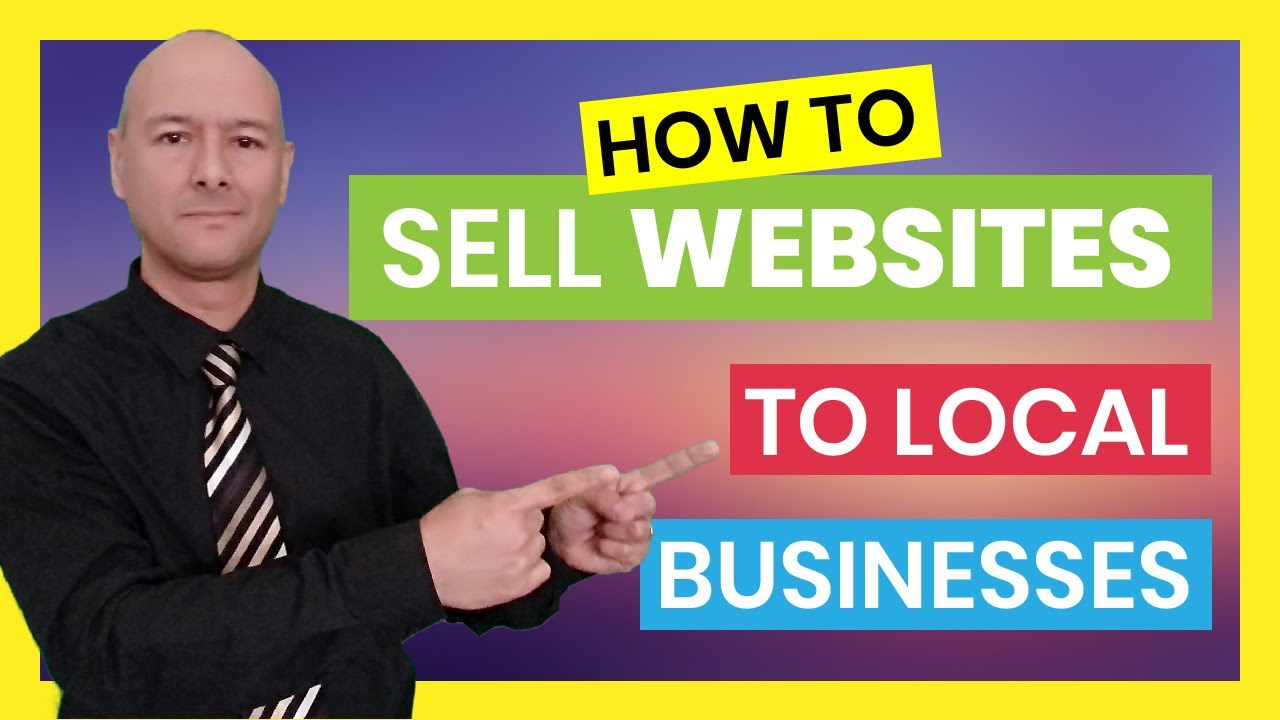
If you are trying to sell your website, you may be wondering how to sell it to a business. The answer is simple: research your buyer's priorities and fears. Read industry reports, attend SaaS conferences, and research websites that have recently been sold. Consider factors such as traffic sources, labor intensity, and reliable documentation. You'll know exactly what your buyer wants when you know what he or she is looking for.
Creating a lead funnel
The process of selling a website involves creating a sales funnel for the website. This funnel should be aimed at capturing prospective customers through their social profiles or website. To track leads, you can use lead generation tools or customer relationship management tools. You can choose to offer three or five stages of the funnel. Some funnels focus solely on marketing to sales processes while others also include post-sale communications. When creating a funnel, keep in mind that it should attract the ideal customer and be relevant to the offer you have to make.
Once a visitor becomes a customer, the journey doesn't end. The customer may visit the website again to track shipment or installation. They may also use the website for customer support, which can result in good reviews and referrals. When creating a sales funnel, consider your target market and the stages in the sales cycle. Once you have identified your target market, create a sales funnel that reflects their behavior and sales cycle.
Lead generation funnels are important tools to increase sales and revenue. They help businesses identify prospective customers and nurture them until they are ready to buy. This type of funnel can help businesses prepare for an upcoming product launch or seasonally adjust an existing product or service. It can also be used to promote special pricing packages in advance. In the end, a sales funnel will help businesses make more money than they would have if they had to call every client and hope they buy something.
When it comes to lead generation, B2B leads are much different from those aimed at consumers. B2B lead generation funnels typically require a higher price tag. As a result, lead generation funnels for B2B websites should be more valuable than those for consumers. However, you should use both types. You should ensure the quality of your lead generation funnels is good enough to generate sales.
Researching marketplaces
The concept of online marketplaces is not new. They have become the preferred channels for enterprise buyers and small businesses alike. This low-cost option allows them to reach a wider customer base, but there's less control over the brand. To successfully run an online marketplace, operators need to master eCommerce, demand generation, and brand building. The corresponding economic benefits are also compelling. Read on to learn more about the business advantages of online marketplaces.
Preparing a proposal
Developing a compelling business proposal to sell websites to businesses can be challenging, but it is necessary. The following tips will help you create a proposal that gets the attention of potential clients. Make sure you follow the correct format, include relevant and standard features, and keep the proposal short and sweet. A well-written proposal will help you win the business of your dream. After all, the goal is to get the business!
o Describe the benefits of your service. When selling websites to businesses, make sure you highlight the benefits that your clients will receive when utilizing your services. For example, in a cover letter, include an example of a client you've worked with, or a case study that highlights the value they will get from using your services. You should also include any UP-SELL or add-on opportunities. Without these, your clients won't be interested in exploring your upper-tier solutions.
o Identify the client's needs and goals. Then outline the steps you'll take to meet those goals. Include client references and any awards or press that have earned you a place in the industry. Lastly, make sure your proposal sounds like a conversation between you and your prospective client. When in doubt, call your client or a surrogate to ensure that your proposal meets their needs.
o Make your proposal customer-focused. The key to a successful website proposal is to focus on the needs of the client and avoid focusing on technical details. You want your proposal to be focused on the needs of the client, so make sure you focus on the benefits they will get from your services. Consider including features such as ease of maintenance, security against cyber attacks, and server specifications. Your proposals should also contain a signature box and the date on which you signed them.
Finding a buyer
There are many different ways to find a buyer when selling websites to businesses. You can begin networking, turn to an online marketplace, or discuss the sale with an employee. The more you know, the more confident you will be in your numbers. Here are some tips for finding a buyer. First, research recent sales on Flippa. Then, analyze what makes the website worth what it does. For example, is the traffic source reliable? Is the documentation up to date? Does the site require a lot of labor? These are all factors to consider when deciding if you should sell your website.
When selling your website, remember that its value depends on its potential for growth and revenue in the long-term. Facebook is worth $50 billion, and this number is not representative of its net value, but rather of its potential to generate ten-figure revenues. Consider the long-term potential for profit and value to users. Increased Google ranking, for example, will attract more buyers. Also, try to avoid selling your website to a buyer who will be willing to pay a high price.
Another tip for finding a buyer when selling websites to businesses is to narrow the target audience. For example, if you are selling your site to an art buyer, it is best to target a niche audience. Your target audience is likely to be art lovers, not sports fans. If you have experience selling to clients, you can help your prospective buyer by offering your website to people who share their interests. Alternatively, you can approach business buyers who are already familiar with your niche.
Negotiating a price
Before you start negotiations, you need to understand what your target buyers want from you. Generally, you should understand all of the due diligence items involved in a transaction. This includes the assets you're selling, how much they are worth, and relevant market activity. A seller should also know industry comparable sales, if possible. If you have an idea of what the buyer is seeking, determining the parameters of the deal beforehand will make the negotiations easier.
A new study has found that sellers who negotiate increase their chances of closing a sale by 8.5 percent. That's an incredible result! Unlike fixed price transactions, negotiating prices creates value beyond the initial transaction. The key is to know when to bargain and when not to. The above examples can help you find out whether price negotiation is worth it for you. When you negotiate with your target, you'll be able to create a better relationship between the buyer and seller.
Remember that the buyer may want to lower the price by threatening to leave if the seller doesn't lower the price. Ultimately, the best bargaining strategy for the seller is to be the first to offer a price. This strategy is known as taking the lead. If the buyer is hesitant to offer you a price that fits within your target range, ask them how they came up with their number and whether or not it fits into their budget.
You can negotiate for a better price if you approach the process from a platform that benefits both the buyer and seller. If you can offer more value than the original price, it will be easier to close a deal. Consider a price that includes training and support for both parties, as these can be equally valuable. This way, you can make the sale faster and more profitably. You'll be happy that you did.
 If you are trying to sell your website, you may be wondering how to sell it to a business. The answer is simple: research your buyer's priorities and fears. Read industry reports, attend SaaS conferences, and research websites that have recently been sold. Consider factors such as traffic sources, labor intensity, and reliable documentation. You'll know exactly what your buyer wants when you know what he or she is looking for.
If you are trying to sell your website, you may be wondering how to sell it to a business. The answer is simple: research your buyer's priorities and fears. Read industry reports, attend SaaS conferences, and research websites that have recently been sold. Consider factors such as traffic sources, labor intensity, and reliable documentation. You'll know exactly what your buyer wants when you know what he or she is looking for.

 If you are trying to sell your website, you may be wondering how to sell it to a business. The answer is simple: research your buyer's priorities and fears. Read industry reports, attend SaaS conferences, and research websites that have recently been sold. Consider factors such as traffic sources, labor intensity, and reliable documentation. You'll know exactly what your buyer wants when you know what he or she is looking for.
If you are trying to sell your website, you may be wondering how to sell it to a business. The answer is simple: research your buyer's priorities and fears. Read industry reports, attend SaaS conferences, and research websites that have recently been sold. Consider factors such as traffic sources, labor intensity, and reliable documentation. You'll know exactly what your buyer wants when you know what he or she is looking for.